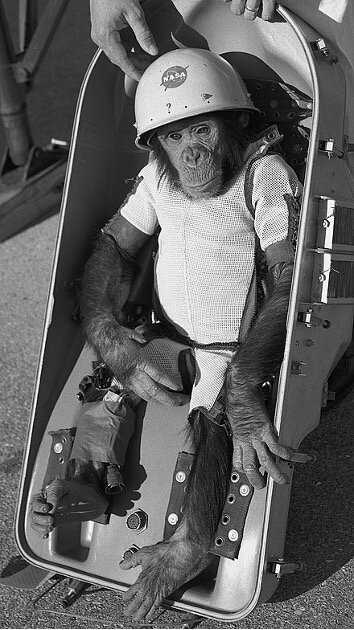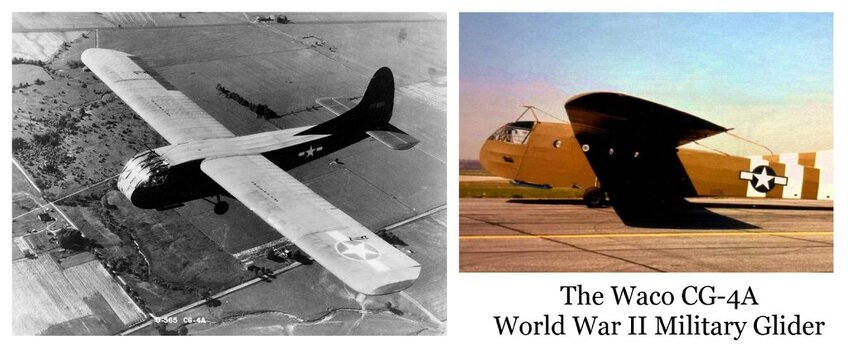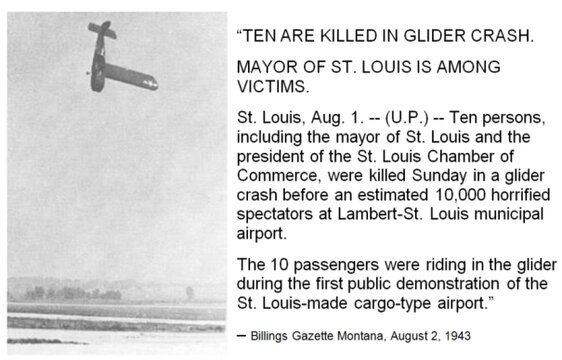In order to understand the vital role played by Alamogordo Army Air Field at the time of the Trinity Atomic Bomb test of July 16th 1945 and a month later when an alleged UFO containing three
hombrecitos crash landed within about 16 miles of Trinity Ground Zero we need to look carefully at the mission of what was later known as the Aero-Medical Field Laboratory at Alamogordo.
I suggest that the Trinity “UFO” which crashed on August 16th was in fact an US Army military glider from Alamogordo Army Air Field and had absolutely nothing to do with extraterrestrial aliens. I intend to show exactly what type of aircraft this was and who the occupants were. When I’ve finished presenting the evidence I hope that the skeptics who claim this case was either a hoax or else the whole story told by Jose Padilla and Reme Baca was a fiction to concede that they were mistaken.
The airfield 6 miles west of Alamogordo, New Mexico, was constructed in 1942 and when completed was established as an US Army Airfield. It was in control of the Alamogordo Bombing Range (later called the White Sands Missile Range) which ran about 75 miles north from Alamogordo. Near the northern end of the range stood a tall radio transmission tower which the Trinity “UFO” supposedly hit before it crash landed 1 – 2 miles away.
In July 1945, Operation Trinity, the test detonation of the world's first atomic weapon, took place in the northern sector of the Alamogordo Bombing Range. To cover up, the Alamogordo Army Air Field issued a press release noting that an ammunition dump had exploded in an accident which caused no injuries. The atomic test remained a secret until after the destruction of Hiroshima, Japan on August 6th 1945.
After the formation of the United States Air Force in September 1947, it was renamed the Holloman Air Force Base in January 1948, and it grew to encompass the White Sands Proving Ground (later New Mexico Joint Guided Missile Test Range, and then White Sands Missile Range). Under the USAF, it hosted a variety of units including tactical fighter wings, missile research groups, foreign (German and British) training units, and the Aero-Medical Field Laboratory which launched a chimpanzee named Ham into suborbital flight.
The Army Medical researchers were tasked with finding out the effects of forces and the high altitude environment on pilots (and later astronauts) who were to fly high performance jets or rocket craft. In the early days it was not so much a question of enduring high G forces or zero gravity as it was one of survivability. Could pilots survive flight at high altitude without pressure suits or suitable oxygen equipment? Could they withstand the G force involved in high speed maneuvers or in ejection from advanced jet aircraft? These things would require volunteers who knew how dangerous such testing might be.
USAF officer Colonel John Stapp made headlines on December 10th 1954 at Holloman AFB when he set a land speed record of 634 mph in a rocket sled along a rail track during five seconds of huge acceleration which subjected him to a force of 20Gs. Although bruised and badly shaken he survived the ordeal without permanent injury. His previous assignments included flights testing various oxygen systems in unpressurized aircraft at 40,000 ft. This flight surgeon, physician and biophysicist was a pioneer in aviation medicine and a friend of Chuck Yeager, the pilot who was the first man to fly faster than the speed of sound (over Edward’s AFB, California).
Another hero from Holloman AFB was the chimpanzee Ham who survived a suborbital space flight on January 31st 1961. He is seen here (aged 3 years) wearing his spacesuit shortly before being launched from Cape Canaveral. His flight was for 16 minutes and 39 seconds taking him to a height of 150 miles though the intention had only been to reach 115 miles. One of the reasons a chimpanzee was chosen for the mission was because of their many similarities to humans. The results from his test flight led directly to the first US suborbital space flight by Alan Shepard on May 5th 1961.

8
Ham’s name is an acronym for the laboratory that prepared him for his historic mission —the Holloman Aerospace Medical Center at Holloman AFB in New Mexico. His name was also in honor of the Commander of Holloman Aeromedical Laboratory, Colonel Hamilton “Ham” Blackshear. Officially Ham was known as No. 65 before his flight and only renamed “Ham” upon his successful return to Earth. This was reportedly because officials did not want the bad press that would come from the death of a “named” chimpanzee if the mission failed.
So, with the dawn of the era of atomic weapons when the first atomic bomb was detonated at Trinity, New Mexico, on July 16th 1945, what new mission was the Aero-Medical Field Laboratory at Alamogordo Army Air Field tasked with? One can only assume that they would be asked to research what protective measures against nuclear radiation and nuclear fallout affecting pilots, air crews and airborne troops would be needed. If an airplane flew through an atomic cloud resulting from an atomic bomb just dropped on the enemy below, what protective clothing for air crews would be effective? If troops were to be landed in areas recently devastated by atomic bombing would their airplanes need special radiation shielding and would they require protective clothing before and after exiting from their aircraft? If so, would it prove effective and allow them to operate normally? These were all questions that military commanders needed to know.
I suggest that the “UFO” crash landing at Trinity on August 16th 1945 was the first such exercise carried out from Alamogordo Army Air Field to find solutions to the problem of airmen surviving radiation and that it went badly wrong but not because of the radiation. I will suggest soon exactly what sort of aircraft it was that crash landed and who were the three passengers in it who perished.
In his book
Trinity: The Best-Kept Secret with Paola Harris, Jacques Vallée asks (p. 153) the questions “What if the object was
designed to crash? What if the lives of the creatures aboard were expendable? Yes, indeed! There Jacques Vallée puts his finger on what this case is all about.



